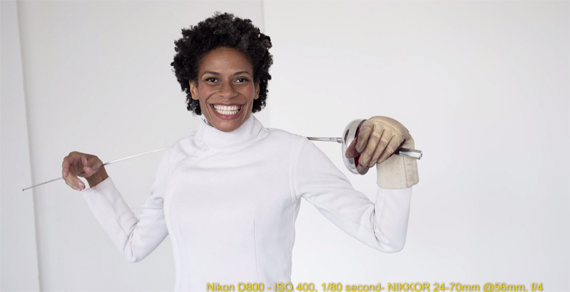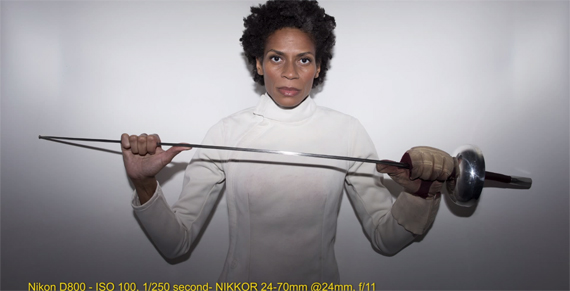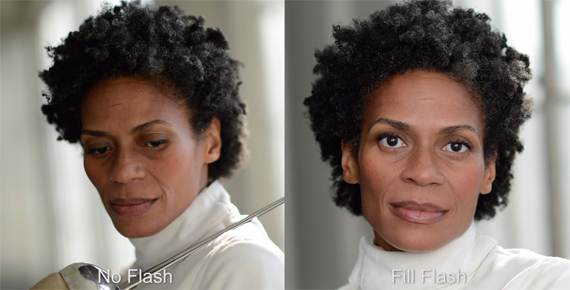Some photographers specialize in “natural light” photography and others have mastered the artificial “creative” stuff, but photographer Joe McNally does it all, and well indeed. In the following short video tutorial, McNally provides basic advice about how to read and harness available light and then integrate that natural ambient light with artificial light:
McNally begins the first look of his photo shoot with three-time US Olympic fencer Sharon Monplaisir using only the natural, ambient light streaming into the bright warehouse chosen for the photo session. He strategically places Monplaisir in the corner of the room to benefit from the light reflecting off of the warehouse’s walls on both sides of her face and behind her. Softly lit from all angles, McNally’s natural light photograph turns out like this:

Natural light provides a soft and pleasing fill while still maintaining some defining shadows.
However, while that soft ambient lighting partnered nicely with Monplaisir’s bright expression, it wouldn’t match the fierce game face of a three-time Olympic athlete, and so for Monplaisir’s edgier poses, McNally creates edgier lighting with a Nikon SB-910 Speedlight and his Nikon 24-70mm f/2.8 lens zoomed all the way out to 24mm.
“So I’m actually working against type or across purposes, which might not seem particularly logical,” said McNally. “Wide field for the lens, tight field for the flash, but that gives me the desired effect of having dark around the edges and a hot core of light to the middle of the photograph.”

Setting the flash contrary to the “norm” allows for a more dramatic effect.
Next, McNally moves Monplaisir to stand in front of the window to demonstrate the differences between solely using natural window light and mimicking the behavior of the window light using a speedlight. The natural light from the window is beautiful and soft, but it can only effectively light one side of Monplaisir’s face, casting the other half of her face into shadow. Rather than lose the textured background by increasing the overall exposure of the image, McNally opts for a fill flash, bouncing the light off a nearby wall to create even light all over Monplaisir’s face.

The image without flash is pleasing but nowhere near as flattering as the photo with flash.
“The basics of light theory do not change,” said McNally. “The bigger the light and the closer it is to your subject, the more wrapping, the more diffuse, the more flattering the light will be.”
Joe McNally has been a professional photographer for over 30 years and has been an ongoing contributor for National Geographic for 23 years running, in addition to contributing numerous images to esteemed publications such as LIFE, Sports Illustrated, TIME, and others.
Like This Article?
Don't Miss The Next One!
Join over 100,000 photographers of all experience levels who receive our free photography tips and articles to stay current:






Leave a Reply